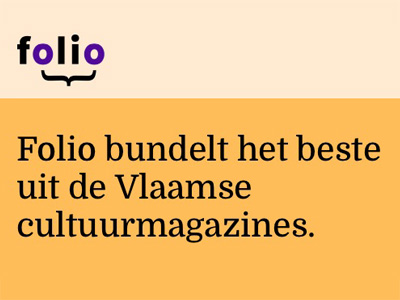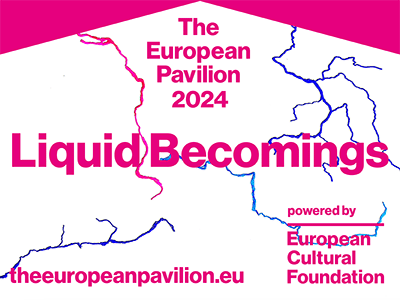Essays
-
De arm om zijn schouder
Dirk Lauwaert -
‘Eén onnozel woord kan soms veel doen.’ [*]
Adolf Merckx en Jan Walravens over Celbeton en de kunst van het publiceren
Carien Gibcus -
De broederschap van het talent: de vriendschap van Emile Zola en Paul Cézanne
Wouter van Raamsdonk -
Agentschap presenteert Specimen 0818-0836 (*)
Agentschap -
The plains en the gutter. Een paar gedachten over Neil Young en Lou Reed
Bart Meuleman -
Affectieve onrust
Bij een gesprek met Michel Foucault over 'gayrechten' en vriendschapsrelaties
Piet Joostens -
WITT
Koen Brams -
Gesprek met Luc Tuymans
Koen Brams -
Dolen door het netwerk van de kunsten
Over artistieke selecties en Pascal Gielens Kunst in netwerken
Gijs van Oenen
Besprekingen
-
British Vision
Marc Holthof -
Bodypoliticx exhibition
Sofie Verdoodt -
Joachim Schmid – Photoworks
Steven Humblet -
The Present Order Is The Disorder Of The Future
Erik van Tuijn -
Andy Warhol. Other Voices, Other Rooms
Daniëlle Hofmans -
David Claerbout in het Centre Pompidou
Lieven Van Den Abeele -
Biennale de Lyon 2007
L'histoire d'une décennie qui n'est pas encore nommée Merel Van Tilburg
-
Le plaisir au dessin
Carte blanche à Jean-Luc Nancy Merel Van Tilburg
-
Doris Salcedo. The Unilever Series
Wouter Davidts -
Paul McCarthy. De tentoonstellingen in het S.M.A.K.
Wouter Davidts
-
Cuypers. Architectuur met een missie
Indira Van ’t Klooster -
De uitdaging van verandering – Omgaan met de erfenis van de moderne beweging
10de internationale Docomomo Conferentie Dorine Van Hoogstraten
-
The Wrong House. Alfred Hitchcock & Pauhof
Lieven Van Den Abeele

130
november-december 2007
Relaties
Wie maakt het kunstwerk? De kunstenaar, zou je zeggen. Alle kritiek op de ‘auteur’ of het ‘genie’ ten spijt hangt ons beeld van de kunstproductie nog altijd vast aan het unieke scheppende individu. Maar ook het anti-individualisme viert hoogtij. In dansmiddens, zo schrijft Myriam Van Imschoot in een brief van enkele jaren geleden, is samenwerking zelfs een fetisjbegrip geworden. In het ‘sociologees’ discours dat ondertussen ook in kunstmiddens is doorgesijpeld, is het ‘netwerk’ dan weer de nieuwste mantra – Gijs van Oenen neemt één voorbeeld hiervan onder de loep: het boek Kunst in netwerken van Pascal Gielen.
Beide extremen zijn problematisch. In dit nummer zoeken we het contactvlak tussen het individuele en het collectieve op: enerzijds de relatie tussen kunstwerk en kunstenaar en anderzijds de relatie tussen kunstenaars onderling (in interviews met Luc Tuymans en Philippe Van Snick). Een oudere case, gepresenteerd door Wouter van Raamsdonk, betreft de vriendschap tussen de auteur-kunstcriticus Émile Zola en de kunstenaar Paul Cézanne. In hun jonge jaren deelden ze de liefde voor de literatuur; maar eens die liefde bij Émile volwassen was geworden en Cézanne definitief had gekozen voor de schilderkunst, bleek hun jeugdige vriendschap niet in artistieke vriendschap omzetbaar. Wat is hier de verklaring voor? Dirk Lauwaert doet een suggestie in zijn essay over vriendschap: het werkelijk geleefde leven begint pas als de kinder- en jeugdjaren worden omgekneed.
Het nummer omvat nog een aantal andere ‘gevallen’ uit totaal verschillende disciplines. Bijvoorbeeld over ‘curating’ toen die term in België/Nederland alleen nog maar in zwang was voor de afhandeling van faillissementen. We publiceren de vroege correspondentie tussen Adolf Merckx, mede-initiatiefnemer van het Dendermondse kunstinitiatief Celbeton (1957-1975) en zijn mentor Jan Walravens, schrijver en kunstcriticus. Carien Gibcus licht deze historie toe. Op het moment dat Celbeton zijn tiende verjaardag vierde – in 1967 – brachten twee rockgroepen hun debuutalbum uit: Buffallo Springfield en The Velvet Underground, met Neil Young en Lou Reed als bandleden. Beiden kozen voor de (rock)groep als een nieuwe collectiviteit waarin de artiest zich kon uitleven… tot hun (solo)ambitie de overhand nam: “Nieuwe structuren en werkwijzen kunnen de jaloezie, de miskenning, de pretentie, de vernedering niet uit de wereld helpen. Ze lijken die juist nog aan te wakkeren”, aldus Bart Meuleman. Een andere gevalstudie, samengesteld door Kobe Matthys, betreft het beeldhouwwerk van de oude Auguste Renoir en de betrokkenheid van diens assistent Richard Guino. Tussen de familie Renoir en Guino kwam het zelfs tot een rechtszaak: na de dood van Renoir eiste Guino met succes het coauteursrecht op van de sculpturen die hij voor ‘Renoir’ – en tot dan onder diens naam – had uitgevoerd.
Relaties eindigen gelukkig niet altijd op rechtszaken. Vaak is het een mysterie – in ieder geval ondefinieerbaar – wat mensen met elkaar verbindt of scheidt, of wat ze denken wat hen verbindt of scheidt. Een voorbeeld is WITT, de codenaam van het genootschap dat Bart Verschaffel, Lieven De Cauter, Paul De Vylder en Rudi Laermans op het einde van 1987 oprichtten. Wat was het gemeenschappelijke programma? Een uitgesproken maatschappelijk engagement, zoals één lid voorstond? Een dadaïstisch cabaret waartoe een ander lid geneigd was? Een beetje van dat alles? Niemand die ons meer doordringt van de potentie van ‘relaties’ dan Michel Foucault in een gesprek met G. Barbedette, vertaald en ingeleid door Piet Joostens.
Dit nummer werd gerealiseerd in samenwerking met Koen Brams.







